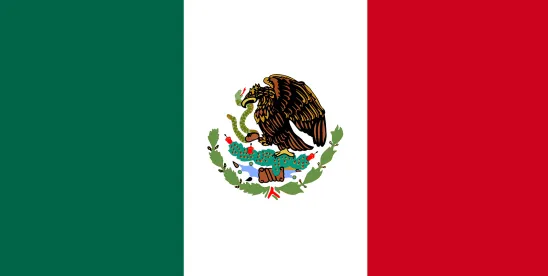On January 21, 2025, the Decree granting tax incentives in support of the national strategy known as “Plan Mexico,” to encourage new investments that promote dual training programs and innovation (Nearshoring Decree) was published in the Official Federal Gazette (DOF), with the primary goal of stimulating the relocation of companies and the reconfiguration of supply chains closer to the U.S. market, particularly in the manufacturing sector in Mexico. The Decree became effective on January 22, 2025.
The Nearshoring Decree extends incentives currently offered to foreign companies that relocate to Mexico and domestic companies with capacity to integrate into value chains (Decree published in the DOF on October 11, 2023 and its amendment published on December 24, 2024, which will no longer be in effect after the publication of the Nearshoring Decree) to allow all domestic or foreign companies, regardless of industrial sector, to benefit from these incentives.
The tax incentives provided by the Nearshoring Decree include:
- Accelerated depreciation for new investments in fixed assets ranging from 41% to 91% (depreciation rates currently set by the Income Tax Law range from 3% to 35%). Higher percentages will apply to investments in high technology sectors and research and development.
New assets are defined as those used for the first time in Mexico.
Immediate deduction will not be available for furniture and office equipment, internal combustion vehicles, armored equipment, non-individually identifiable assets, or aircraft other than those used for agricultural spraying.
Fixed assets must be used for at least two years (except in cases of force majeure) and a specific record of the investment must be kept.
- Additional deduction for expenses related to staff training (25% of the increase in expenses over the average of the last three fiscal years). A collaboration agreement with the Ministry of Public Education regarding organizational training is required.
- Additional deduction for expenses associated with the promotion of inventions to obtain patents or initial certifications that enable integration into local/regional supply chains (25% of the increase in expenses over the average of the last three fiscal years).
The Decree also establishes an Evaluation Committee, composed of representatives from the Ministry of Finance and Public Credit and the Ministry of Economy, with the participation of the Regional Economic Development and Relocation Advisory Council, which will evaluate the investment projects and collaboration agreements submitted and, where applicable, issue the certificate of compliance required to apply for the tax incentives. The Evaluation Committee will determine the maximum amount of tax incentives that may be claimed by taxpayers for each fiscal year.
Taxpayers that have fixed tax credits, are in liquidation, have restricted use of digital stamps, or whose certificates to issue digital tax receipts have been cancelled, among others, will not be able to apply the incentives.
The total amount approved by the Committee will not exceed MX$30 billion during the validity of the Decree, of which MX$28.5 billion will be for investments in new fixed assets and the remaining MX$1.5 billion for deductions related to training and innovation expenses. A minimum of MX$1 billion will be allocated to micro, small, and medium enterprises (those with total revenues of up to MX$100 million in the previous year).
Accelerated depreciation will apply to fixed assets acquired until September 30, 2030, and the additional deduction for training and innovation expenses will apply until and including fiscal year 2030.
The economic support measures implemented by the Nearshoring Decree will promote investment and expansion in key sectors such as manufacturing, technology, automotive, electronics, and renewable energy, boosting economic growth in Mexico, especially in the northern regions and other areas close to the United States, where investment will be concentrated. This will create thousands of jobs in these key industrial sectors.
With this, Mexico could become a more competitive hub in Latin America for the manufacture of high-tech, automotive, and electronic products. This transformation could establish the country as a key strategic partner in global value chains.
This Decree will not only strengthen Mexico as a manufacturing destination, but will also contribute to a global reconfiguration of supply chains, with a greater focus on diversification and reduced dependence on regions such as Asia.
The main challenges for the Mexican government to ensure the nearshoring strategy is effective and sustainable in the long term will be to; (i) ensure adequate labor conditions; (ii) manage the pressure on existing infrastructure and resources, such as roads, ports, and energy supplies, that will result from increased investment and the creation of new facilities; and (iii) establish means to enable micro, small, and medium-sized domestic companies to access incentives and modern infrastructure to avoid being displaced by large corporations.
* * * * *
El Gobierno mexicano anuncia incentivos en apoyo del nearshoring
El 21 de enero de 2025, se publicó en el Diario Oficial de la Federación (DOF) el Decreto por el que se otorgan estímulos fiscales para apoyar la estrategia nacional denominada “Plan México”, para fomentar nuevas inversiones, que incentiven programas de capacitación dual e impulsen la innovación (Decreto “Nearshoring”), que tiene como objetivo principal estimular la relocalización de empresas y reconfiguración de cadenas de suministro más cercanas al mercado estadounidense, particularmente en la manufactura en México. El Decreto entró en vigor el 22 de enero de 2025.
A partir del Decreto Nearshoring se extienden los incentivos que actualmente son otorgados a las empresas extranjeras que se relocalizan en México y a empresas nacionales que tienen capacidad para integrarse a las cadenas de valor (Decreto publicado en el DOF el 11 de octubre de 2023 y su modificación publicada el 24 de diciembre de 2024, el cual dejará de estar vigente a partir de la publicación del Decreto Nearshoring), para que puedan acceder a ellos todo tipo de empresas nacionales o extranjeras, sin distinción de sectores industriales.
Los estímulos fiscales que otorga el Decreto Nearshoring, son:
- Depreciación acelerada de inversión nueva en activo fijo (41% – 91%). Los porcentajes más altos se aplicarán a inversiones en sectores de alta tecnología, investigación y desarrollo. Es importante señalar que los porcentajes de depreciación que actualmente señala la Ley del Impuesto sobre la Renta van del 3 al 35%.
Se consideran bienes nuevos los que se utilizan por primera vez en México.
La deducción inmediata no será aplicable respecto de mobiliario y equipo de oficina, automóviles de combustión interna, equipo de blindaje, activo fijo no identificable individualmente, ni aviones que no sean para aerofumigación agrícola.
Los activos fijos deberán mantenerse en uso por mínimo dos años (salvo pérdidas por caso fortuito o fuerza mayor) y se deberá llevar un registro específico de las inversiones correspondientes.
- Deducción adicional de gastos destinados a la capacitación de personal (25% sobre el incremento de gastos respecto del promedio de los 3 ejercicios anteriores). Se requiere contar con un convenio de colaboración con la Secretaría de Educación Pública en materia de educación dual.
- Deducción adicional por gastos asociados a la promoción de invenciones para la obtención de patentes, o bien, de certificaciones iniciales que posibiliten la integración a cadenas de proveeduría local/regional (25% sobre el incremento de gastos respecto del promedio de los 3 ejercicios anteriores).
A través del Decreto, se crea también un Comité de Evaluación integrado por representantes de la Secretaría de Hacienda y Crédito Público y de la Secretaría de Economía, con la participación del Consejo Asesor de Desarrollo Económico Regional y Relocalización, que evaluará los proyectos de inversión y convenios de colaboración presentados y, en su caso, emitirá la constancia de cumplimiento requerida para aplicar los estímulos fiscales. El Comité de Evaluación determinará el monto máximo de estímulos fiscales que los contribuyentes podrán aplicar para cada ejercicio fiscal.
No podrán aplicar los estímulos los contribuyentes que tengan créditos fiscales firmes, se encuentren en ejercicio de liquidación, tengan restringido el uso de sellos digitales o cancelados sus certificados para expedir comprobantes fiscales digitales, entre otros.
El monto total que el Comité autorizará no excederá de 30 mil MDP durante la vigencia del Decreto, del cual 28 mil 500 MDP se destinarán a la inversión en bienes nuevos de activo fijo y los otros 1500 MDP a la deducción en gastos de capacitación e innovación. Como mínimo, 1000 MDP serán destinados a micro, pequeñas y medianas empresas (ingresos totales en el ejercicio anterior de hasta 100 MDP).
La depreciación acelerada será aplicable para bienes de activo fijo adquiridos hasta el 30 de septiembre de 2030 y la deducción adicional por gastos de capacitación e innovación, hasta, inclusive, el ejercicio fiscal 2030.
Las medidas de apoyo económico que se implementan a través del Decreto Nearshoring permitirán fomentar la inversión y la expansión de sectores clave como manufactura, tecnología, automotriz, electrónica y energías renovables, impulsando el crecimiento económico de México especialmente en las regiones del norte y otras áreas cercanas a los Estados Unidos, donde se concentrará la inversión. Esto generará miles de empleos en dichos sectores industriales clave.
Con ello, México podría convertirse en un hub más competitivo en América Latina para la manufactura de productos de alta tecnología, automotrices y electrónicos. Este cambio podría consolidarlo como un socio estratégico clave en las cadenas globales de valor.
Este Decreto no solo fortalecerá a México como destino de manufactura, sino que contribuirá a una reconfiguración global de las cadenas de suministro, con un mayor enfoque en la diversificación y la reducción de la dependencia de regiones como Asia.
Los grandes retos que tendrá el gobierno de México para que la estrategia de Nearshoring sea efectiva y sostenible a largo plazo, serán principalmente: (i) garantizar condiciones laborales dignas; (ii) gestionar adecuadamente la presión sobre la infraestructura y recursos existentes, como carreteras, puertos y suministros energéticos, que generará el aumento en la inversión y la creación de nuevas plantas; y (iii) establecer medios que permitan a las empresas nacionales de micro, pequeño y mediano tamaño, acceder a los incentivos e infraestructura moderna para no verse desplazadas por las grandes corporaciones.
Nuestra firma cuenta con el equipo y capacidades para asistir a nuestros clientes en el diseño e implementación de estrategias que les permitan aprovechar los estímulos fiscales otorgados a través del Decreto Nearshoring.






 />i
/>i

